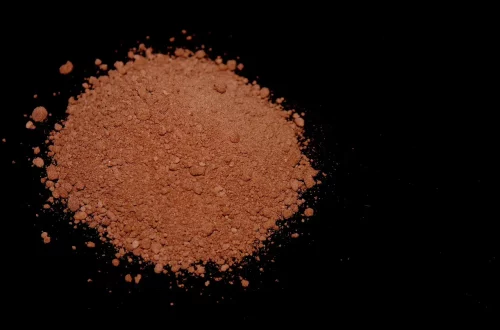
Exploring the Art of Being Hogtied Tight: Techniques and Tips
The practice of hogtying, which involves binding a person’s arms and legs together, has a rich history that stretches across various cultures and communities. This technique, often associated with escapology, performance art, or even specific forms of bondage, requires a delicate balance of skill, communication, and trust. Those who engage in hogtying often seek not only a physical connection but also an emotional bond that enhances their experience. This ancient art form has evolved, becoming a popular activity in modern contexts, from workshops to private sessions, where enthusiasts share techniques and build upon traditional methods.
Understanding the dynamics of hogtying goes beyond the physical aspects; it encompasses the psychological trust that is essential for participants. This trust allows for exploration within safe boundaries, making it a unique intersection of art, intimacy, and technique. Whether for personal enjoyment, performance, or as a means of exploring one’s limits, hogtying offers opportunities for creativity and expression. As with any skill, mastering hogtying involves learning about materials, techniques, and safety practices, ensuring that all parties involved have a positive and safe experience.
In this article, we will delve into various techniques and tips that can enhance your hogtying practice, emphasizing safety and respect for all participants involved.
Understanding the Basics of Hogtying
Before diving into advanced techniques, it’s crucial to grasp the fundamentals of hogtying. At its core, hogtying involves binding the limbs of a person in a way that secures them yet allows for some mobility. The traditional method incorporates the use of ropes, cuffs, or other materials, and it’s essential to choose the right ones based on the comfort and safety of the individual being tied.
Selecting the appropriate rope is one of the first steps in hogtying. Natural fibers, such as cotton or jute, provide a soft texture that minimizes discomfort during the tying process. Synthetic ropes, while durable, can sometimes cause friction burns if tied too tightly or if the individual struggles. It’s advisable to test the rope on yourself or a willing partner to understand its behavior and comfort levels.
The knotting technique is another vital aspect of hogtying. Basic knots like the square knot or the bowline knot are popular choices due to their strength and reliability. It’s important to familiarize yourself with these knots before engaging in hogtying. Practicing various knots will not only enhance your skills but also build your confidence in managing the ropes effectively.
Communication is equally important when practicing hogtying. Before beginning, establish clear consent and a safe word that can be used to halt the activity immediately if needed. Discussing boundaries and comfort levels can significantly enhance the experience for everyone involved. This dialogue fosters trust and safety, allowing the participants to enjoy the experience without fear of discomfort or distress.
In summary, understanding the basics of hogtying lays the groundwork for a successful practice. The materials chosen, the knots tied, and the communication established all contribute to a safe and enjoyable experience. As you become more comfortable with the fundamentals, you can begin to explore more complex techniques and variations.
Advanced Techniques for Hogtying
Once you’ve mastered the basics, you may wish to explore advanced hogtying techniques that can add a layer of creativity and complexity to your practice. These techniques often involve variations in the way ropes are tied or the positions that can be achieved.
One popular advanced technique is the use of decorative knotting. This not only serves a practical purpose but also adds an aesthetic element to the binding. Techniques such as the Japanese art of Shibari can be integrated into hogtying to create visually stunning patterns while ensuring the participant’s safety remains a priority. The intricate designs formed by decorative knots can enhance the overall experience, turning a simple hogtie into a work of art.
Another technique involves varying the position of the tied individual. Instead of the traditional hogtie position, consider experimenting with different poses that may offer unique sensations or challenges. For instance, a side-lying position can provide a different perspective and experience, allowing for a more relaxed environment while still maintaining the essence of hogtying.
Incorporating elements of suspension can also be an intriguing addition to advanced hogtying. However, it’s crucial to have a thorough understanding of safety precautions when attempting suspension techniques. Always ensure that the individual is comfortable and capable of handling the position before proceeding. Additionally, having a spotter or an extra pair of hands can be invaluable when trying more complex variations.
Finally, integrating sensory elements into your hogtying practice can elevate the experience. Blindfolds, for instance, can enhance the thrill of anticipation and heighten the senses. Combining sensory deprivation with hogtying can create an immersive experience that allows participants to explore their boundaries and preferences in a safe environment.
In conclusion, advanced techniques can transform your hogtying practice into a multifaceted art form. By incorporating decorative knotting, experimenting with different positions, considering suspension options, and adding sensory elements, you can explore new dimensions of connection and creativity.
Safety Tips for Hogtying
Safety is paramount when engaging in hogtying. Regardless of your experience level, it’s essential to prioritize the well-being of all participants involved. Here are some critical safety tips to keep in mind.
Firstly, always ensure that consent is clearly established and understood by everyone. Consent should be enthusiastic and can be revoked at any time. Establishing a safe word is crucial, as it provides a means for participants to communicate their comfort levels during the practice.
Monitoring the tied individual’s physical state is essential. Keep an eye out for any signs of distress, such as difficulty breathing, numbness, or excessive discomfort. If any of these signs arise, it’s important to release the bindings immediately. It’s also wise to periodically check in with the individual to ensure their comfort and well-being throughout the experience.
Proper knotting techniques are fundamental to safety as well. Avoid tying knots that are too tight, as this can restrict circulation and lead to serious injuries. It’s advisable to leave enough slack in the ropes to allow for some movement, preventing the individual from feeling trapped. Additionally, familiarize yourself with quick-release knots that can be untied swiftly in case of an emergency.
Another safety consideration is the environment in which you practice hogtying. Choose a space that is free from hazards and allows for a safe experience. Ensure that the area has enough room for movement and that there are no sharp objects or furniture that could pose a risk to the tied individual.
Lastly, educating yourself about the anatomy and physiology of the human body can further enhance safety in hogtying. Understanding pressure points and circulation can help you avoid potential injuries and create a more enjoyable experience.
In summary, prioritizing safety in hogtying involves clear communication, monitoring participants’ well-being, proper knotting techniques, choosing a safe environment, and educating yourself about the human body. By adhering to these safety tips, you can create a secure and enjoyable environment for everyone involved.
Creating a Positive Experience
Hogtying can be a rewarding experience when approached with care and consideration. To foster a positive atmosphere, it’s essential to focus on communication, respect, and enjoyment.
Start by discussing expectations and boundaries before beginning any hogtying session. Open dialogue allows participants to express their desires and concerns, ensuring that everyone is on the same page. This conversation not only builds trust but also enhances the overall experience.
Incorporating aftercare into your practice is another vital aspect of creating a positive experience. Aftercare encompasses the time spent together after the hogtying session, allowing participants to reconnect and decompress. This may involve physical comfort, such as cuddling or providing water, as well as emotional support through open conversation about the experience.
It’s also important to remember that every participant is different. Personal preferences, comfort levels, and boundaries should be respected at all times. Flexibility in your approach allows for a more tailored experience, accommodating individual needs and ensuring that everyone involved feels valued and respected.
Furthermore, consider documenting the experience through photographs or videos, provided that all parties consent to this. Capturing moments can enhance the memory of the experience and can be a fun way to revisit the session later. However, ensure that privacy and consent are prioritized in any documentation process.
Finally, always strive to learn and improve your skills. Attend workshops, read literature, and engage with the community to enhance your knowledge and techniques. Continuous learning not only benefits your practice but also contributes to creating a more enjoyable environment for everyone involved.
In conclusion, creating a positive experience in hogtying involves open communication, respect for individual boundaries, incorporating aftercare, and a commitment to ongoing learning. By focusing on these elements, participants can foster a meaningful connection and enjoy the art of hogtying to its fullest.
This article serves as a guide to explore the techniques and tips involved in hogtying. However, if you have health concerns or issues, it is crucial to consult a medical professional for advice and assistance. Always prioritize your health and well-being above all else.




